Inoculating Soybean Seeds for Enhanced Yields and Health
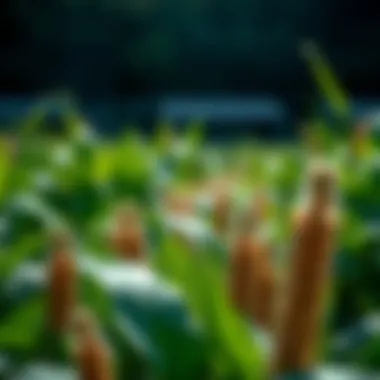

Intro
In the realm of agriculture, the practice of inoculating soybean seeds stands as a pillar of modern farming efficiency. Not only does it enhance crop yield, but it also plays a crucial role in sustaining soil health. For farmers and agronomists, particularly those invested in sustainable farming practices, grasping the nuances of this process can lead to significant benefits both in the short and long run.
Topic Overview
Definition and Importance
Inoculation of soybean seeds involves introducing beneficial microorganisms into the seed or planting medium. This practice aims to enhance the growth of soybeans through improved nutrient uptake, especially nitrogen. By fostering an environment conducive to symbiotic relationships, such as those between soybeans and Rhizobium bacteria, farmers can achieve more robust plant health and increased yields. Moreover, as global discussions on sustainable agriculture intensify, inoculation emerges as a strategy that not only boosts productivity but also aids in reducing synthetic fertilizer reliance.
Brief History and Evolution
Historically, the idea of enhancing crops through microorganisms isn’t new. Cultures around the world have used various means—compost, natural mulch, and more—to bolster their seeds. However, it was in the late 19th century when scientists began isolating specific strains of bacteria for leguminous plants. Over the years, with advances in technology and agronomy, methods have evolved. Today, the inoculation process is grounded in scientific research, ensuring effective application and consistent results.
Key Techniques and Innovations
Sustainable Farming Practices
To increase the efficacy of inoculation, several sustainable practices have been adopted. These include:
- Crop rotation with other legumes to enhance soil microbiome
- Minimal tillage to preserve soil structure
- Use of organic amendments alongside inoculant application
By adhering to these principles, farmers cultivate a more resilient ecosystem that not only yields better crops but also fosters environmental preservation.
Advanced Agronomic Technologies
The integration of technology into the inoculation process has brought about significant advancements. Modern methods now include:
- Precision agriculture tools that assess when and how much inoculant to apply
- Drone technology for aerial application to cover large fields efficiently
- Genetic advancements in both soybeans and microbial strains that optimize performance
These innovations are paving the way for smarter, more efficient farming practices that are crucial in today’s agricultural landscape.
Practical Applications
Step-by-Step Guides
Implementing inoculation effectively requires careful planning. Here’s a basic outline of the steps involved in the process:
- Select the right inoculant: Choose a strain that is well-suited for the soil and soybean variety.
- Prepare the seeds: Ensure seeds are clean and dry; this aids in better inoculant adhesion.
- Apply the inoculant: Mix the inoculant with the seeds according to manufacturer instructions (maintaining moisture helps).
- Planting: Ensure proper planting techniques are followed to allow for optimal growth.
- Monitoring: Post-planting, monitor soil health and plant growth to evaluate the inoculation’s effectiveness.
Case Studies or Real-World Examples
In the Midwest U.S., a farmer identified a significant yield increase after inoculating his soybean seeds with a specific strain of Rhizobium. Initially skeptical due to the costs involved, the subsequent harvest far exceeded his expectations, demonstrating the potential profitability of this practice. Similarly, a case study in Brazil showcased how cooperative farming groups shared resources to apply inoculants, thereby improving not only individual yields but also community agricultural practices.
Important Note: Inoculation significantly reduces the need for chemical fertilizers, thereby contributing to a more sustainable ecological footprint in farming.
By understanding the intricacies of soybean seed inoculation, farmers can take concrete steps toward optimizing their practices, resulting in better crop yields while also promoting environmental sustainability. For further information on sustainable practices and inoculation techniques, consider visiting Wikipedia or USDA.
As we delve deeper into the components of this vital agricultural practice, farmers and enthusiasts alike can emerge more knowledgeable and equipped to face the challenges of modern farming.
Understanding Soybean Inoculation
In the world of agriculture, particularly in soybean cultivation, inoculation stands out as a vital practice. When you think about fostering healthy crops, you might wonder why this specific technique is so crucial. Well, it's all connected to maximizing the efficiency of the plant's growth without heavily relying on chemical inputs. Inoculating soybean seeds involves introducing specific strains of beneficial bacteria, known as Rhizobia, into the seeds before planting. By doing this, farmers equip their crops with the ability to fix atmospheric nitrogen, a process that not only enriches the soil but also promotes robust growth.
The process isn’t merely a step in planting; it's a foundational aspect that affects everything from yield potential to soil health and resilience against diseases. When done right, inoculation can bolster yields and reduce the need for synthetic fertilizers, ultimately steering farming practices toward sustainability.
Definition and Importance
At its core, soybean inoculation can be understood as the introduction of specific Rhizobium species into seed during the planting process. This practice is indispensable for the successful growth of soybeans, especially in areas where such bacteria aren't naturally present in the soil.
Where nature might fall short, inoculation serves as the farmer's ally. In simple terms, these bacteria form a symbiotic relationship with the soybean plants, essentially acting as tiny nitrogen factories. This process is particularly relevant in regions with less fertile soils, allowing farmers to tap into nitrogen sources that their plants would otherwise struggle to find. In doing so, inoculation plays a critical role in soil fertility and sustainable agriculture.
Key Nutrients and Soil Dynamics
Soybean plants are demanding when it comes to health and nutrient needs. One of their greatest requirements is nitrogen. By harnessing nitrogen from the environment through inoculation, soybeans cultivate a necessary nutrient source right in their roots. This not only enhances growth but also promotes the stability of soil structure, allowing better water retention and preventing erosion. Consider the following insights:
- Soil Microbial Activity: The presence of Rhizobia boosts overall microbial activity in the soil. Enhanced biological activity contributes to a healthier ecosystem, leading to better nutrient cycling.
- Soil pH Adjustment: As Rhizobium bacteria work to fix nitrogen, they also produce organic acids. This can help in adjusting soil pH over time, steering it closer to optimal conditions for growth.
- Nutrient Availability: Beyond nitrogen, the interaction between Rhizobia and plant roots can facilitate the uptake of other critical nutrients like phosphorus and potassium, vital for growth and development.
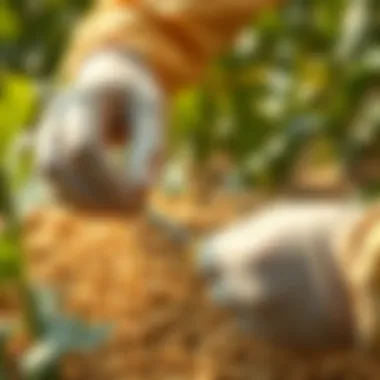
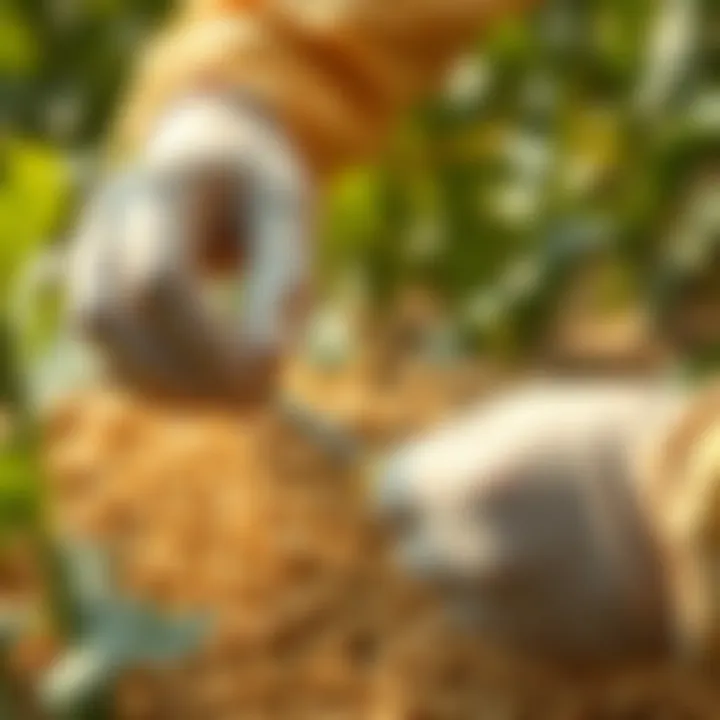
Historical Context and Developments
The practice of soil inoculation is not a recent phenomenon. Its roots can be traced back to agricultural practices of the early 20th century when scientists first recognized the nitrogen-fixing capabilities of Rhizobia. Before that, farmers relied heavily on trial and error.
- In the 1880s, research by Beijerinck and Waksman laid foundational knowledge about how these bacteria operate. They discovered that the bacteria associated with legumes could substantially enhance soil fertility.
- Fast forward to the mid-20th century, as agricultural science advanced, inoculation methods became more refined and accessible. The introduction of commercial inoculants paved the way for farmers to optimize their practices rapidly.
- Recent years have shown a further increase in interest, with advancements in biotechnology leading to strains that are not only more effective but also tailored to specific soy cultivars and local soil conditions. These modern innovations help ensure that soybean inoculation remains a relevant and integral part of contemporary farming.
Through understanding the essential aspects of soybean inoculation, farmers can better appreciate the techniques and history that bring them sustainable success in their fields.
The Biological Basis of Inoculation
Understanding the biological backbone of soybean seed inoculation is crucial for grasping its significance in agricultural success. This section digs deeper into two pivotal components: the role of rhizobia in nitrogen fixation and the intricacies of symbiotic relationships that bolster crop growth. Grasping these concepts not only enhances crop management strategies but also promotes sustainable practices.
Role of Rhizobia in Nitrogen Fixation
Rhizobia are gram-negative bacteria that play a fundamental role in nitrogen fixation, an essential process for leguminous plants. When soybean seeds are inoculated, these bacteria colonize the roots, forming nodules where they convert atmospheric nitrogen into a form that plants can utilize. This symbiotic relationship is a game changer—without this process, soybean plants would struggle to obtain sufficient nitrogen from the soil, thus impacting their growth and yield.
The presence of rhizobia can mean a world of difference in terms of fertilizer usage. Farmers may reduce their reliance on synthetic nitrogen fertilizers, which not only cuts costs but also lessens the environmental impact associated with fertilizer runoff. Moreover, healthy nodules allow for enhanced nitrogen availability, ultimately leading to improved crop health and productivity.
"The presence of rhizobia allows soybeans to thrive in nitrogen-poor soils, turning challenges into opportunities for farmers."
Symbiotic Relationships
The relationship between rhizobia and soybean plants exemplifies a classic mutualism, where both organisms benefit. While the soybean plant offers carbohydrates and a favorable environment for rhizobia, the bacteria supply the plants with essential nitrogen. This connection not only enhances individual plant growth but also contributes to the overall fertility of the soil. By increasing nitrogen content over time, soybean plants unknowingly enrich the soil for subsequent crops, a principle deeply rooted in sustainable agriculture.
When established effectively, these symbiotic relationships can stabilize and enrich agricultural ecosystems. The operations of rhizobia effectively mimic the functions of organic fertilizers—an added advantage in crop rotation practices, particularly in mixed farming systems. This symbiosis cultivates a go-to approach for ensuring continuous nitrogen supply without harming the environment.
It's essential to note that the successful formation of nodules depends on the specific strain of rhizobia used in inoculation. Farmers must select the appropriate inoculant tailored to their specific soil and crop conditions to maximize efficiency.
Methods of Inoculating Soybean Seeds
The process of inoculating soybean seeds is crucial for maximizing the potential of this significant crop. With the right techniques and materials, farmers can significantly improve seed germination and enhance overall yield. This section will explore the specific methodologies associated with inoculation, putting a spotlight on the different types of inoculants, application methods, and the best timing to achieve optimal results.
Types of Inoculants
In the world of soybean cultivation, not all inoculants are created equal. There are generally three main types of inoculants used:
- Liquid Inoculants: These are highly favored for their ease of application. They can easily adhere to the seed surface and provide nitrogen-fixing bacteria directly where they are needed.
- Peat-based Inoculants: This type often comes in a dry form and requires mixing with water before use. They are known for their high concentration of rhizobia but demand careful handling to ensure the bacteria remain viable.
- Granular Inoculants: Less common but gaining traction, these allow for precise application and can be mixed with fertilizers. However, their success hinges on the existence of moisture in the soil shortly after planting.
The choice of inoculant can determine the success of your inoculation efforts. Certain factors like regional soil conditions and the specific soybean variety being planted should guide this selection process to ensure the best outcomes.
Application Techniques
When it comes to applying inoculants, there are several techniques that can be employed, each with its own merits:
- Coating Seeds: This method involves directly coating the seeds with the inoculant, allowing the bacteria to be in close contact with the seed and enhancing the likelihood of effective colonization. It is essential that seeds are dry before application to prevent clumping.
- Fertility Mixing: Mixing inoculants with starter fertilizers can create a nutrient-rich environment for seeds. However, care must be taken with rates and interactions, as certain chemicals can be harmful to the bacteria.
- Soil Application: Instead of treating the seeds, some farmers opt for applying the inoculant to the soil in the planting row. This can be particularly useful when seed coating is deemed impractical.
Moreover, utilizing proper equipment is vital during these techniques. Using seed drills or planters that are well-suited for inoculant application can make a significant difference in operation efficiency.
Timing and Environmental Considerations
Timing is everything in agriculture, and inoculation is no exception. The effectiveness of an inoculant is highly influenced by environmental conditions. Here are some considerations:
- Soil Temperature: Ideal soil temperatures for soybean seed germination range from 55°F to 60°F. Inoculants should be applied when temperatures are within this range to promote the best bacterial activity.
- Moisture Levels: After inoculation, sufficient soil moisture is crucial to facilitate the germination process and the establishment of the rhizobia. Without moisture, even the best inoculant will underperform.
- Planting Window: Applying inoculants within the appropriate planting window ensures that seeds are treated just before they go into the ground. Too early, and the bacteria may die off; too late, and seedlings may not benefit from the inoculation.
"Correct timing is half the battle when it comes to maximizing the success of soybean inoculation."
By considering these factors, farmers can plan their inoculation processes more effectively, setting the stage for robust soybean crops.
Understanding and implementing the right methods for inoculating soybean seeds is not just about application; it’s about creating an intricate balance between science and the subtleties of nature. This comprehensive approach ensures that soybean plants get off to the best start possible.
Evaluating Inoculation Effectiveness
Evaluating the effectiveness of soybean inoculation is paramount for farmers and agronomists who want to optimize their yields and crop health. Understanding how to assess whether the inoculation process has been successful allows for better strategic decisions in subsequent planting seasons. Different indicators signal effective inoculation, providing a frame of reference to compare yield data and overall plant health. Furthermore, the incorporation of research and case studies can shine a light on real-world applications of soy inoculation, paving the way for more informed practices and advancements in the field.
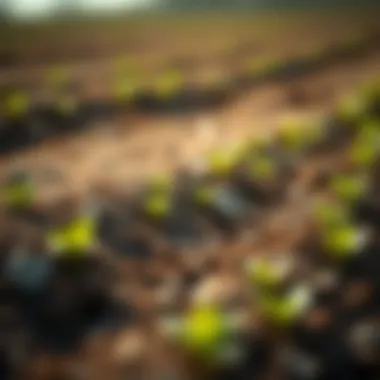
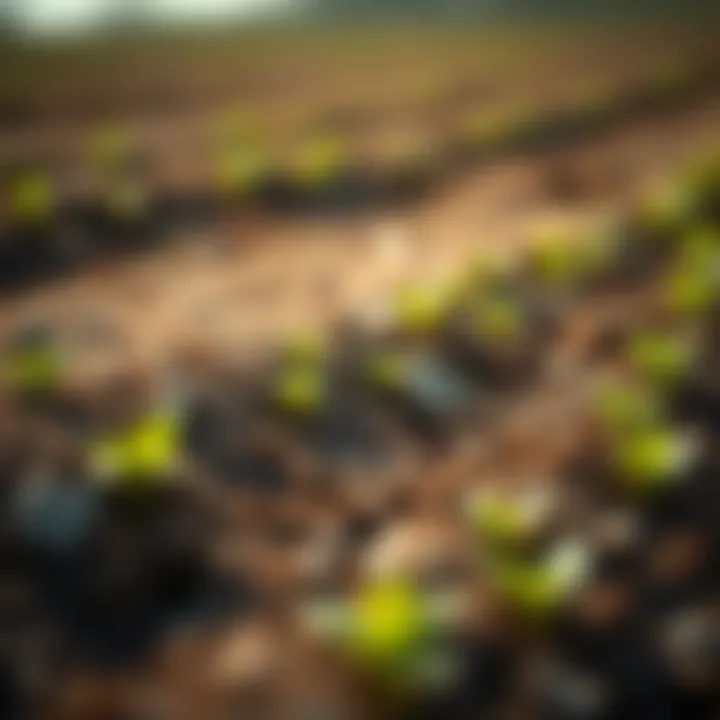
Indicators of Successful Inoculation
Determining whether soybean seed inoculation has been successful is not as simple as counting bushels at harvest time. Several key indicators should be assessed during the growth cycle. These indicators provide insights that can help tailor future inoculation strategies.
- Plant Growth Metrics: This includes measuring plant height, leaf area, and overall vigor. Healthy plants that show consistent growth patterns typically indicate successful inoculation.
- Nodulation Assessment: The presence of root nodules is one of the most significant indicators of successful rhizobia colonization. Farmers often dig up a few plants to analyze root systems and count the nodules, looking for robust formations as a sign that nitrogen-fixing bacteria are at work.
- Soil Testing for Nutrients: Analyzing soil composition before and after inoculation can provide data on nitrogen levels. Higher nitrogen content is often a sign that the inoculation was effective, reflecting the symbiotic relationship between soybeans and rhizobia.
- Yield Comparison: Harvest yield should be compared with prior years or control plots where inoculation was not used. An increase in yield can substantiate the success of the inoculation process.
By focusing on these indicators, farmers can make more informed decisions about their inoculation practices, leading to improved outcomes in crop productivity.
Research and Case Studies
Real-world insights from research and case studies can enhance our understanding of the benefits of soybean inoculation. Various studies conducted in diverse agricultural environments have strengthened the foundation on which best practices are built.
One noteworthy study published in the Agronomy Journal revealed that farmers who used inoculated seeds yielded an average of 15% more than those who did not inoculate. This study highlights the distinct advantages of integrating inoculation into standard farming practices.
Moreover, a case study from a cooperative extension service in Iowa documented the experience of a local farmer who adopted inoculation. The farmer reported not only higher yields but also significant improvements in soil health over three years, resulting in better water retention and nutrient cycling.
"Inoculation isn't just a side note in soybean farming; it's the pulse of a healthier crop and soil!"
As seen, evaluating inoculation effectiveness goes beyond mere observation—it ties in with broader agricultural strategies and enhances sustainability efforts. These examples from the field reinforce the need for continued research and highlight the importance of adapting practices based on empirical evidence.
Benefits of Inoculating Soybean Seed
Inoculating soybean seeds has become an essential practice for maximizing the potential of this key crop. The act of applying specific strains of Rhizobia to the seeds before planting not only promotes the growth and robustness of the plants but also improves the overall health of the soil. The significance of this practice goes beyond mere yield enhancement; it plays a vital role in sustainable agriculture and the preservation of environmental resources.
Enhancing Crop Yield
One of the most immediate benefits of inoculating soybean seeds is the substantial increase in crop yield. When Rhizobia bacteria are present, they engage in symbiosis with soybean roots, facilitating nitrogen fixation. This process allows the plants to absorb nitrogen from the atmosphere, a nutrient often lacking in the soil. As a result, inoculated soybeans can produce more pods and seeds compared to non-inoculated plants.
- Increased Nitrogen Availability: More nitrogen contributes to healthier plants, resulting in higher productivity.
- Improved Overall Growth: Plants are not only more productive but also exhibit better resistance to diseases and adverse conditions.
Research conducted by institutions like Purdue University has shown that farmers can expect to boost their yields by as much as 10-20% through effective inoculation methods.
Soil Health Improvement
Inoculating soybean seeds, while beneficial for crop yield, also has profound implications for soil health. The interaction between Rhizobia and the soybean plants enriches the soil microbiome. This not only leads to better nutrient cycling but also enhances soil structure and aeration.
- Enhanced Microbial Diversity: A diverse microbial community can contribute to disease suppression and nutrient availability.
- Soil Structure Benefits: Healthy soybean plants promote root systems that encourage earthworm activity and other beneficial soil organisms, creating a more fertile environment.
Additionally, soybean crops act as a cover crop, aiding in erosion control and retaining moisture. Thus, inoculated soybeans help build a soil base that can sustain not just themselves but also future crops.
Sustainability Aspects
From an environmental viewpoint, inoculating soybean seeds is a step towards sustainable farming practices. By relying on biological nitrogen fixation, farmers can reduce their dependence on synthetic fertilizers. This shift is crucial in an era marked by increasing concerns over fertilizer runoff into waterways and the adverse effects on eecosystems.
- Reduction in Fertilizer Use: Farmers can cut down on chemical inputs, lowering costs and minimizing environmental impact.
- Lower Carbon Footprint: With less reliance on industrial fertilizers, the carbon footprint associated with soybean farming can be significantly reduced.
Inclusion of such practices aligns with the goals of modern agriculture—improving productivity while safeguarding the planet.
In educating farmers about the benefits and methods of inoculating soybean seeds, we are not just improving their practices; we are contributing to the health of our ecosystems and securing food for the future.
In summary, the benefits of inoculating soybean seeds extend to increased crop yield, enhanced soil health, and significant environmental sustainability. In an ever-evolving agricultural landscape, these practices offer pragmatic ways to boost productivity while adhering to principles of responsible and sustainable farming.
Further Reading
For those interested in diving deeper into the topic, you can explore the following resources:
- USDA National Agricultural Statistics Service
- Illinois Soybean Association
- The Soybean Research and Information Initiative
By embracing these practices, farmers not only boost their yields but also contribute to the broader agenda of ecological sustainability.
Challenges in Soybean Inoculation
Inoculating soybean seeds comes with its own set of hurdles. While the benefits of this practice are substantial, understanding the challenges involved is crucial for farmers and agronomists alike. By recognizing these issues, practitioners can better prepare their strategies, ensuring that efforts lead to successful crop cultivation. In this section, we delve into the risks and economic considerations tied to soybean inoculation, providing insights that can guide decision-making in the field.
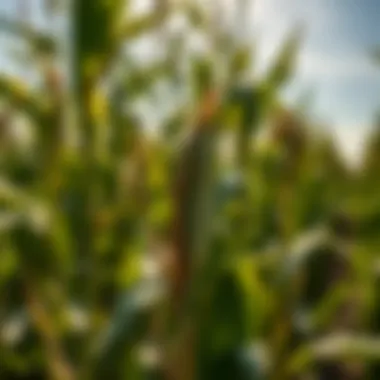
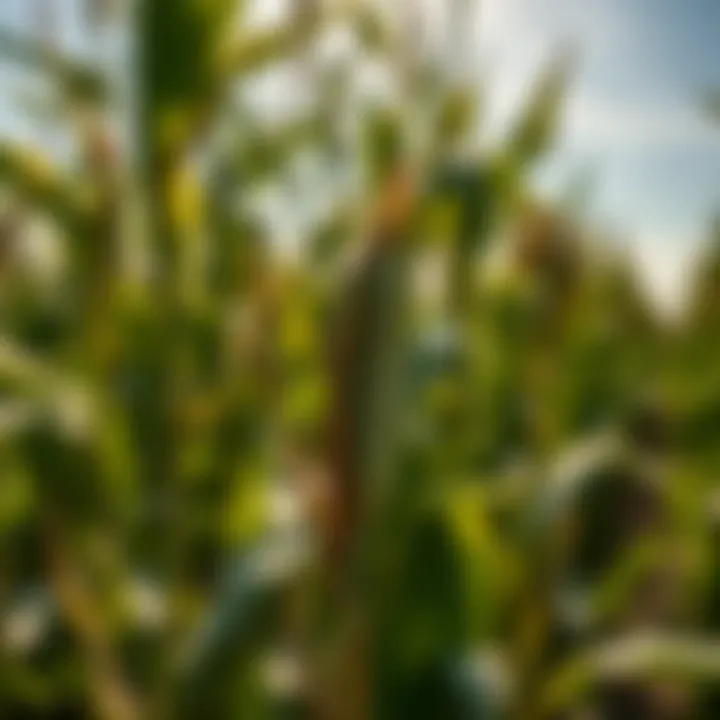
Potential Risks and Considerations
Soybean inoculation isn’t a one-size-fits-all approach. Various risks can impact the effectiveness of inoculation efforts.
- Inoculant Survival: The viability of the inoculant during storage and application is a primary concern. If the bacteria are not alive or active, the intended benefits diminish significantly.
- Environmental Factors: Weather conditions, such as excessive moisture or drought, can heavily influence inoculant activity. Ideally, rhizobia need the right conditions to thrive after germination. Variable water availability can impede root development, making the inoculation process less effective.
- Soil Dynamics: Soil types vary significantly, and some might inherently possess antagonistic organisms that can undermine the rhizobia's impact. Additionally, soil pH and nutrient levels also play a significant role in determining whether the inoculant will flourish or fail.
"An effective inoculation process is as reliant on soil health as it is on the quality of the inoculants themselves."
- Crop Rotation Impact: Following certain crops that have fully utilized soil nutrients can deplete necessary resources, rendering the inoculated seed less effective. Knowledge about previous crops is vital to prospective yields from inoculated soybeans.
By acknowledging these potential pitfalls, farmers can carefully plan inoculation, minimizing risks and ensuring that their soybean crops get the best start possible.
Economic Factors
The economic implications of soybean inoculation extend beyond the cost of inoculants. Considerations include:
- Cost of Inoculants: While inoculants are an investment, the upfront costs can be a deterrent for some farmers. Understanding the long-term yield benefits is essential to justify this expense.
- Yield Increase: Economic viability largely hinges on the potential gains from yield increases. If soybean inoculation leads to significantly higher yields, the initial costs may pale in comparison to the eventual profitability.
- Input Savings: Inoculated soybeans may require fewer fertilizers due to enhanced nitrogen fixation from rhizobia, ultimately lowering overall production costs.
- Market Fluctuations: Economic factors can shift dramatically based on market conditions. Price drops can erode the financial benefits gained from increased yield due to inoculation, making timing and market knowledge vital in decision-making.
Farmers need not only to assess the costs associated with inoculation but also to weigh the potential economic benefits against these investments. By addressing both risks and economic factors, stakeholders can navigate the complexities of soybean inoculation with greater finesse.
Future Trends in Soybean Inoculation
As the agriculture landscape continues to evolve, staying abreast of new methodologies for inoculating soybean seeds is crucial. Soybean inoculation, while a well-established practice, is not immune to the reach of innovation. This section explores emerging trends that hold the potential to redefine the inoculation process, optimize crop performance, and sustain environmental health. Farmers, agronomists, and agricultural students need to understand these advancements to harness their benefits and applicable insights effectively.
Biotechnological Innovations
The drive for biotechnological advancements is pivotal in enhancing soybean inoculation practices. Utilizing genetic engineering, researchers are developing more effective strains of Rhizobia, the bacteria essential for nodulation and nitrogen fixation. This involves enhancing their compatibility with various soybean varieties, which can lead to increased effectiveness in nutrient uptake.
Also noteworthy is the advent of microbiome research, which looks at the fine interplay of soil bacteria and fungi. Scientifically, this means neither simply adding more bacteria nor just changing the strains; it encompasses understanding the entire ecosystem in which these microbes operate. Rather than viewing inoculation in a vacuum, integrating findings about soil health can refine inoculant application, resulting in synergistic benefits.
Moreover, innovations in delivery systems for inoculants promise to revolutionize how farmers apply these essential organisms. Products that use polymer coatings or other encapsulation methods allow for a gradual release of bacteria, which can provide sustained growth benefits as the crop develops.
Integration with Precision Agriculture
As technology stitches itself into the fabric of agriculture, the integration of inoculation practices with precision agriculture becomes increasingly viable. This integration may not just be a convenience but rather a vital strategy for optimizing yield and resource use.
By employing precision agriculture techniques, farmers can gather real-time data on soil conditions, moisture levels, and nutrient availability. This information allows for a targeted application of inoculants tailored to specific field segments, ensuring that bacteria are concentrated in areas where they will thrive and provide the utmost benefit. As a result, it minimizes waste and promotes economic viability.
Furthermore, using geographic information systems (GIS) can help map soil microbiome diversity. Some areas may require specific inoculum depending on the local soil and climate. Armed with this knowledge, farmers can make informed decisions, which is particularly important as climate patterns become increasingly erratic.
Soybean seed inoculation paired with precision agriculture can potentially increase efficiency and enhance environmental stewardship, reflecting a knowledgeable approach to farming in the modern age.
Closure and Implications
The role of inoculating soybean seeds cannot be underestimated in the realm of modern agriculture. As we venture into a time when the demand for sustainable practices is at an all-time high, this technique offers a pathway not only to better crops but also to healthier soil ecosystems. The importance of this practice extends beyond simple yield increases into the territory of long-term soil health and environmental responsibility.
First and foremost, soybean inoculation aids in enhancing nitrogen fixation through the symbiotic relationships with Rhizobium bacteria. This partnership not only improves yields but also reduces the need for synthetic fertilizers, which have their own environmental implications. Thus, embracing inoculation aligns with a broader commitment to sustainable farming practices.
Moreover, inoculation may significantly alter the economic landscape for farmers. By increasing crop productivity and reducing input costs associated with chemical fertilizers, farmers may see a better bottom line while contributing to a healthier ecosystem.
However, farmers need to approach this practice with care. The continuous reliance on biological inoculants calls for an understanding of soil health dynamics and crop rotation options. This ensures that not only are we maximizing our current crop yields, but we are preserving our land for generations to come.
In essence, the implications of soybean seed inoculation are vast. From economic feasibility to environmental sustainability, the practice emerges as a cornerstone in the discussion of modern farming methods. By adopting this technique, farmers can contribute to an agricultural model that prioritizes efficiency without sacrificing ecological balance.
Summary of Insights
The key insights gathered from this guide highlight several aspects of soybean inoculation.
- Nutrient Efficiency: Utilizing inoculants can optimize nitrogen availability, enriching soil nutrient profiles.
- Yield Enhancement: Inoculated seeds yield better results not just in quantity but also in quality, securing better market prices.
- Sustainability Focus: The practice promotes reduced dependency on artificial fertilizers, contributing positively to ecological footprints.
You’ll find that the adoption of inoculation in soybean farming is a win-win for both producers and the planet.
Call for Continued Research
It is crucial to underline that while soybean inoculation presents a promising avenue for agricultural enhancement, the field must remain open to ongoing research. As agricultural methods and technologies evolve, so too should our understanding of inoculation practices. The specific areas warranting further exploration include:
- Genetic Variability: Investigating different soybean varieties' responses to various inoculants can unveil higher levels of efficacy.
- Microbial Interactions: Delving into the specifics of how Rhizobium and other soil microorganisms communicate can enhance inoculation methods.
- Climate Adaptation: Studying how changing weather patterns affect inoculation strategies will help tailor practices better suited to differing environments.
The call for further research isn't just about improving yield; it's also about securing future food sources and environmental integrity. The world of agriculture is ever-changing, and keeping pace with new findings can only be advantageous as we step forward into a more sustainable era in farming.



